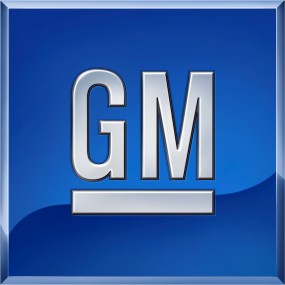 General Motors took the first step toward a new public offering last week with the filing of a massive Form S-1 with the SEC. While exact terms of the offering are not known yet, Barron’s has estimated that the IPO transaction may be worth $15 billion and would result in a market capitalization of $60 billion. With the United States Treasury owning over 60 percent of the company, the IPO represents a partial exit strategy for Uncle Sam and an opportunity for GM to shed the “Government Motors” stigma that has negatively impacted consumer perceptions.
General Motors took the first step toward a new public offering last week with the filing of a massive Form S-1 with the SEC. While exact terms of the offering are not known yet, Barron’s has estimated that the IPO transaction may be worth $15 billion and would result in a market capitalization of $60 billion. With the United States Treasury owning over 60 percent of the company, the IPO represents a partial exit strategy for Uncle Sam and an opportunity for GM to shed the “Government Motors” stigma that has negatively impacted consumer perceptions.
Aggressive Pension Plan Assumptions – A Red Flag?
Tony Jackson raised an important point in today’s Financial Times regarding GM’s pension assumptions which should serve as a giant warning sign for anyone contemplating participation in the IPO. Mr. Jackson noted that GM’s official assumption for returns on pension assets is 8.5 percent which is far above the yields available on government bonds traditionally used to fund long term pension liabilities and implies a need for the company to structure its pension plan like a “hedge fund” in order to achieve the necessary returns. Even based on aggressive return assumptions, GM’s United States based defined benefit plans were underfunded by $17.1 billion while non-U.S. plans were underfunded by $10.3 billion as of December 31, 2009.
Aggressive assumptions for pension plans is nothing new and a 8.5 percent figure is not as egregious as the double digit return assumptions that were often used during brighter times for financial markets. However, it is self evident that achieving such returns will require GM to “reach” for yield in the fixed income portfolio or invest in equities or other assets classes. Returns that fall below the 8.5 percent assumption will result in potentially much larger pension deficits and could wipe out a significant amount of shareholder equity.
As a point of reference, Berkshire Hathaway uses a 6.9 percent rate of return assumption in its defined benefit pension plan accounting.
Examining pension plan assumptions is perhaps one of the most overlooked factors in security analysis and few investors seem to be bothered by underfunded plans or aggressive return assumptions. As we pointed out in a recent article regarding Kewaunee Scientific Corporation, failure to look at such factors can result in substantial erosion in shareholders’ equity over time.
New Start or More of the Same?
While GM’s initial public offering represents positive news for taxpayers and a “new start” for General Motors, there are ample signs beyond questionable pension funding that could lead us to believe that the company has not abandoned its old ways of doing business. A couple of notable examples: The company recently announced plans to acquire AmeriCredit in order to establish a captive finance arm that may be used to aggressively extend credit to borrowers who fail to qualify for prime loans. The introduction of the Chevrolet Volt at an uncompetitive price of $41,000 is an excellent example of product development being driven by political considerations and the availability of tax credits rather than a careful assessment of consumer demand.
For taxpayers, any recovery of the government’s investment in GM should be a welcome development but investors should carefully consider the warning signs before sitting down at the other side of the table from Uncle Sam as the date of the IPO nears.
Disclosures: None.
